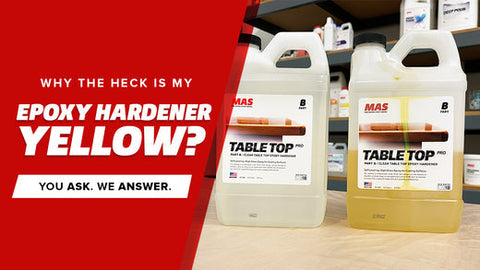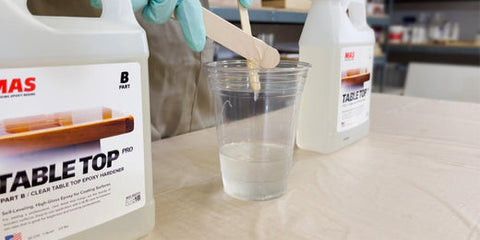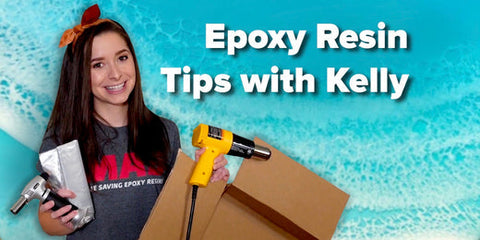Learn How To Properly Store Your Epoxy Resin!
You Ask . We Answer!
Has your epoxy resin hardener turned yellow? Do you want to learn why epoxy resin hardeners discolor and how to prolong this from happening? Well, here at MAS Epoxies, we pride ourselves on being transparent with our customers (and our epoxy). Continue reading to learn more!
Give Our Best Selling Epoxies A Try!
Check Out This Helpful Video Tutorial!
Oxidization Is NOT Your Friend...
Definition of oxidization: the process of oxidizing; the addition of oxygen to a compound with a loss of electrons; always occurs accompanied by reduction.
One common example of oxidization is metal rusting, which I’m sure, we’ve all seen before. But have you ever noticed the outside of your butter, that isn’t tightly wrapped in the fridge, getting darker? This too is another form of oxidization.
Just like the loosely wrapped butter in your fridge, epoxy resin hardener will also get dark (yellow) when it starts to oxidize.
Oxidization Culprits: Oxygen and Humidity
Breaking the seal of the epoxy bottle will introduce oxygen and humidity to your epoxy resin hardener. To combat the oxidization process, make sure to clean the rim and bottle cap before closing your bottles. This will help to create an airtight seal.
Fun Fact: Here at MAS Epoxies, when we make the epoxy, it might take a month or two before we pour it down into the bottles you know and love. To protect the clarity of the epoxy, during this time, we pump nitrogen into the holding tanks.
You can do the same thing at home with a product called Bloxygen. Bloxygen is just canned argon gas that you can spray into your bottle of epoxy before closing it. This blocks the oxygen and humidity from touching your epoxy.
How Long Does Epoxy Last?
The shelf life of MAS epoxy resins and hardeners is at least one year in sealed containers, but the material can last much longer when stored between 60-90°F in a dry place. The product should be stored indoors, on a raised surface off the floor and away from exterior walls. Do not allow epoxy resins or hardeners to freeze during winter storage. After use, tightly reseal all containers. With age or when stored improperly, you may encounter issues such as crystallization of the epoxy resin or yellowing of the hardener. If there is any doubt about the condition of old material, we recommend mixing a small amount in a disposable cup to ensure it hardens before using it for a project.
Moisture and Temperature
The recommended minimum temperature for clear coating and laminating is 55-60°F, but for bonding anything, above 45°F should be sufficient. 30-65% relative humidity is ideal for manufacturing, but the MAS 2:1 Epoxy System is not as sensitive to ambient moisture as some other products. Just be mindful not to let the curing epoxy come in direct contact with moisture while it is gelling, i.e., rain and dew. Be sure to keep containers tightly sealed when not in use to protect material from moisture contamination during storage.
Why Is My Resin Chalky White?
A chalky white appearance can happen when epoxy coatings have been allowed to cure in temperatures below the recommended minimum temp of 55-60°F. You may be able to turn the coating clear again by heating the area up with a space heater or heat gun, but more than likely you will have to sand off the chalky epoxy and recoat if you want the coating to be clear. Potential failures down the road of the opaque coating could be a reduced life span and lower overall mechanical properties of the epoxy.
Epoxy Is Temperature Sensitive
For best results, all materials and working conditions should be maintained at a constant 70°F-80°F. Epoxy is a temperature sensitive material. When cool, it’s thicker and sets slower. When warm, it’s thinner and sets faster. When working in conditions or with material below 70°F, epoxy may become too viscous to properly release air and self-level. Working in conditions or with material above 80°F, it may set too quickly and exotherm, become too hot, which could cause it to yellow, distort or crack.





Comments (1)
What happens if part B arrives already yellow(oxidized). Can it be used like that
Thanks